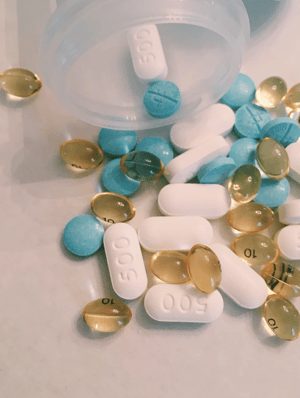In recent years, the use of opioids has skyrocketed, drawing attention from all levels of government across the country. In 2016, opioid-related overdose deaths reached an all-time high of over 42 thousand, prompting President Trump to declare a public health emergency. [i]
Rural communities are hit especially hard by the opioid crisis due to their lack of access to the appropriate care and certified providers. However, telemedicine can solve many of the barriers to care that rural communities currently face.
As the crisis continues to spread across the country, with seemingly no end in sight, the time has come to consider more innovative solutions to address the opioid epidemic.
How Can Telehealth Combat the Opioid Crisis?
Telehealth platforms enable patients struggling with opioid use disorders (OUDs) to engage with clinicians and mental health professionals from the comfort of their own homes at any time assistance is required. Instead of having to drive to a specialist that is several hours away, patients can message, call, or video conference with their clinician, a psychiatrist, or a therapist instantly.
This immediate point of contact has proven crucial to patients with many types of behavioral and mental health illnesses and can work for those with OUDs as well. Many studies have shown that patients who receive care through telemedicine, and video conferencing specifically, felt little to no change in the quality of care they were receiving.[ii]
Providing those with OUDs with telemedicine solutions to track their daily progress will provide clinicians with a more comprehensive patient profile, as well as allow patients to engage in their treatment plan and view their own progress. Patients can begin their day by answering questions about how they feel and continue to answer questions as the day progresses. Brief surveys would not interrupt a patient’s daily agenda and can be checked regularly by clinicians, specialists, or even family members and caregivers. In this way, providers can gain more insight into what triggers a patient's relapses and subsequently build an individualized treatment plan.
Innovative Applications of Telehealth for Substance Abuse Disorders

Sadly, patients with OUDs face a substantially higher risk of early death. However, medication-assisted treatment (MAT) has been shown to reduce the risk of death by nearly 50 percent.[iii] MAT treatments can involve either methadone, naltrexone, or buprenorphine. However, methadone requires strict prescription regulation as well as supervision when being administered, and naltrexone's effectiveness is still being tested. Therefore, these therapies are not ideal for telehealth applications. However, buprenorphine can help to bridge this gap and enable MAT access in rural areas to be increased.
While the requirement for clinicians to retain federal waivers for buprenorphine has relaxed in recent years, rural areas lack the number of prescribers necessary. Additionally, physicians who have retained the federal waiver consistently prescribe far less frequently than the legal limit. However, utilizing physicians in the same state that have retained their federal waivers would help open access to patients in rural areas to receive adequate MAT treatment.
Barriers to Telehealth
In 2008, with the passing of the Haight Act, providers were prevented from remotely prescribing controlled substances through telemedicine unless they first conduct an in-person examination, or if the patient is being treated at a DEA-registered facility. This legislation largely defeats the main benefit of treatment via telemedicine - the ability to bring treatment to the patients whenever they need it.
Additionally, reimbursement barriers remain for telehealth treatment. Reimbursement for video conferencing is limited when not located at an originating site and other forms of reimbursement for remote monitoring still seem elusive to many providers.
Potential Solutions
Recently, states and private organizations have taken steps to combat the opioid epidemic. Six states now allow telemedicine-controlled substance prescribing without a prior in-person examination. These states include: Delaware, Florida, Indiana, Michigan, Ohio, and West Virginia. These states are the first to take this important step toward combating the opioid epidemic by creating new pathways to care. Now, a patient in a rural Ohio suffering from OUD can be prescribed a MAT, like buprenorphine, from a physician in one of Ohio's cities (who is more likely to hold a federal prescription waiver).
Additionally, just this past week, with the passage of the Agriculture Improvement Act of 2018, Congress increased the budget of the US Department of Agriculture Distance Learning and Telemedicine (DLT) grants to $82 million. This new legislation also requires more than 20 percent of government assistance for telemedicine to go directly to projects designed to fight opioid abuse.
The next step remains for the Federal government to roll back portions of the Haight Act to allow for remote prescribing, and for CMS, alongside states and private insurers, to expand reimbursement for videoconferencing and remote patient monitoring.
References:
[i] Hedegaard H, Warner M, Miniño AM. Drug overdose deaths in the United States, 1999e2016. NCHS Data Brief, No. 294. Hyattsville, MD: National Center for Health Statistics; 2017.
[ii] Hilty DM, Ferrer DC, Parish MB, Johnston B, Callahan EJ, Yellowlees PM. The effectiveness of telemental health: a 2013review. Telemed J E Health. 2013;19(6):444-454
[iii] Vivolo-Kantor AM, Seth P, Gladden RM, et al. Vital signs: trends in emergency department visits for suspected opioid overdoses d United States, July 2016eSeptember 2017. Morb Mortal Wkly Rep. 2018;67(9):279-285.